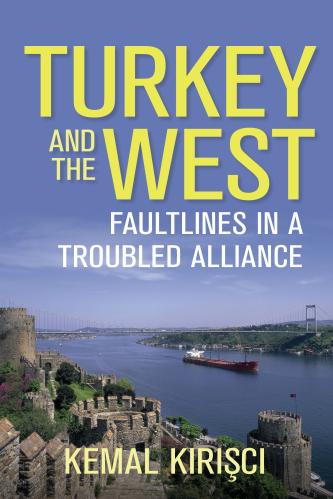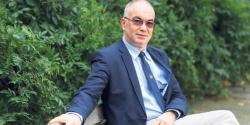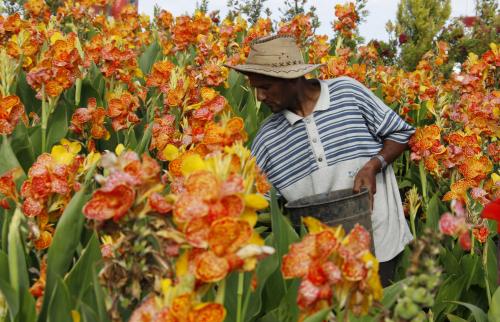As the crisis in Syria enters its seventh year, it shows little sign of abating. The violence there has killed nearly half a million people and displaced more than 11 million others—over six million of them within the country, and roughly five-and-half million beyond its borders within the region. Although nearly a million more have sought asylum in Europe, the majority of Syrian refugees reside in neighboring states, which have been called upon to shoulder the social, political, and economic consequences. Approximately 3.5 million are seeking new lives in Turkey. As Syrian regime attacks on the Idlib region mount, there are fears that these numbers may well increase.
Against this backdrop, there is a growing international recognition of the need for new approaches—and new energy behind efforts to identify them. United Nations member states are now in the process of developing a new Global Compact for Refugees (GCR), designed to improve responses to displacement worldwide, which will be adopted when world leaders convene in New York in September of this year. A key component of the GCR is the Comprehensive Refugee Response Framework (CRRF), which lays out objectives that include easing pressures on refugee-hosting countries, building refugee self-reliance, expanding access to resettlement, and supporting conditions for refugees to return home voluntarily. It is intended to take “whole of society” approach, bringing together a range of stakeholders for a coordinated response.
The CRRF is being applied in 13 countries. None of them are in the Middle East—despite the considerable experience amassed by frontline states, which together host roughly a quarter of all refugees worldwide. Capturing this knowledge, and ensuring that it informs the Programme of Action that will accompany the CRRF and underpin its implementation, is critical.
A few lessons are immediately evident.
First, since the European migration crisis of 2015, Syrian refugees have been seen as a threat to the stability and future of Europe. There has been a concerted effort to keep Syrian refugees close to home with walls, barbed wire, and the deterrent effect of squalid conditions, especially on the Greek islands. The implicit assumption in Europe is that Syrian refugees, who are overwhelmingly Muslim, are more likely to integrate into their host communities in the frontline countries because of cultural affinity. This is a simplistic approach. It fails to recognize challenges resulting from economic, political, social, and even cultural differences between host communities and refugees. A public opinion survey in Turkey completed late in 2017 reveals that 80 percent of Turkish society believes that refugees either “do not resemble at all” or “do not resemble” them culturally. Strikingly, this percentage increases in some parts of Turkey bordering Syria, where locals “share the same geography, religion, sect and even ethnic commonality with Syrians,” as survey author Murat Erdoğan notes.
Second, engagement between humanitarian actors and local authorities is essential. That is in part because of the urbanization of displacement. Today, approximately 60 percent of refugees and at least half of internally displaced people worldwide reside in urban environments. More than 90 percent of Turkey’s refugee population lives outside of traditional refugee camps, almost one million of them in Istanbul and with one city, Kilis, hosting more Syrians than its own population. The Turkish government, civil society, and the municipalities where refugees are concentrated have accumulated rich experience in facilitating integration and managing challenges related to social cohesion.
Cities—and the dense networks of public, private, and civic actors that operate within them—are an inspiring source of innovation. They can also be particularly challenging environments for the displaced, who frequently forgo formal protection when they leave formal camps. In cities, newcomers may find that labor and housing markets are tight, costs are high, social services are strained, and relations with established residents are tense. The latter reality is startling, considering that 75 percent of the Turkish public, according to the above survey, does not agree that it is possible to live in peace with Syrians. Supporting urban projects that mitigate the pressure on public services and nurture a culture of living together (social cohesion) will be essential to managing this resentment.
In a recent report, “I am Only Looking for my Rights,” senior advocate at Refugees International Izza Leghtas illustrates how, while Turkey’s new system of work permits for refugees is an important step forward, few refugees have benefited and exploitative work in the informal sector remains the norm. Some livelihood programs in Turkey’s urban centers are assisting refugees in the difficult task of accessing legal employment, but there is an urgent need for these programs to be expanded. Her work suggests that the U.N. High Commissioner for Refugees (UNHCR) should cooperate with municipal authorities to expand the availability of free Turkish language instruction for adult and child refugees, and to support the creation of community centers in Istanbul where refugees can access employment assistance and information about their rights. The report also makes clear that for legal employment of refugees to become a reality, there must be incentives for employers to hire refugees and the private sector must be involved.
Next month, UNHCR is expected to release a “zero draft” of the GCR. Formal consultations on the text, attended by U.N. Member States, will take place between February and July of this year. During that window, UNHCR should find ways to feed lessons from Turkey and other frontline states into the ongoing discussions. One way to accomplish this would be to commission a detailed report that sheds light on good practices, and share it with member states as part of the formal consultation process. This idea, as well as others, are outlined in a forthcoming brief, “The Global Compact for Refugees: Bringing Mayors to the Table, Why and How.”
Drawing on the experience of Turkey, as well as other frontline states like Jordan and Lebanon, which have also received large numbers of Syrian refugees, will help ensure that the CRRF is as effective as it can be. That’s not just good for the framework’s legitimacy—it’s good for the millions of refugees in search of safety, and for the communities that host them.






Commentary
In rethinking refuge, draw lessons from Turkey
January 25, 2018